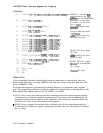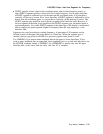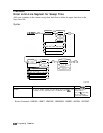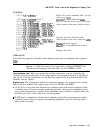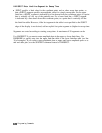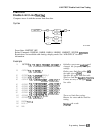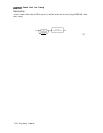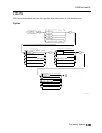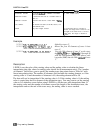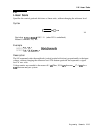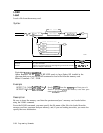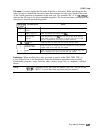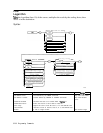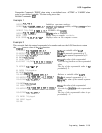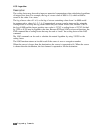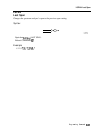
LINFILL Line Fill
Item
User-defined variable
Predefined variable
Predefined function
Trace element
Number
Description/Default
R-f&
A variable
deEned
by VARDEF or ACTDEF
Any valid variable name.
commands.
A command that acts as a variable. Refer to
‘lhble 5-1.
Function that returns a value. Refer to ‘lhble
5-l.
An element of trace A, trace B, trace C, or a
user-defined trace.
Any valid integer number.
For the starting value or number of
elements, the range of the number is 0 to
the length of the trace minus 1. For the
ending value, the range is -32,763 to
+
32,767.
Example
OUTPUT
718;"LINFILL
TRC,O,O,O;"
Initializes trace C.
OUTPUT
718;"MOV
TRC[l,lO]
,TRA[l,lOl;"
Moves the jirst 10 elements of trace A into
trace C.
OUTPUT
718;"LINFILL
TRC,l0,40,8000;"
Uses the 10th element of trace C as the start-
ing valwq
fills
trace C elements 11 through 50
with the interpolated data, and places end-
ing
value (8000) into the 50th element of trace
C.
Description
LINFILL uses the value of the starting value and the ending value to calculate the linear
interpolation data (the values for ending value should be in measurement units). The “number
of elements” field allows you to specify the number trace data points that are “filled in” with
linear interpolation data. The number of elements field includes the starting element, so if the
starting value is 10 and the number of elements is 40, the ending element will be 50.
The data will not be interpolated if the starting value is 0. If the starting value is 0, the ending
value is copied into the first element of the destination trace. You may want to set the starting
value to 0 to initialize a trace before using LINFILL to fill the trace with interpolated data. If
the starting value and the number of elements exceed the length of the destination trace, the
interpolation ends at the end of the trace array; the ending value is never reached.
5.284
Programming Commands



